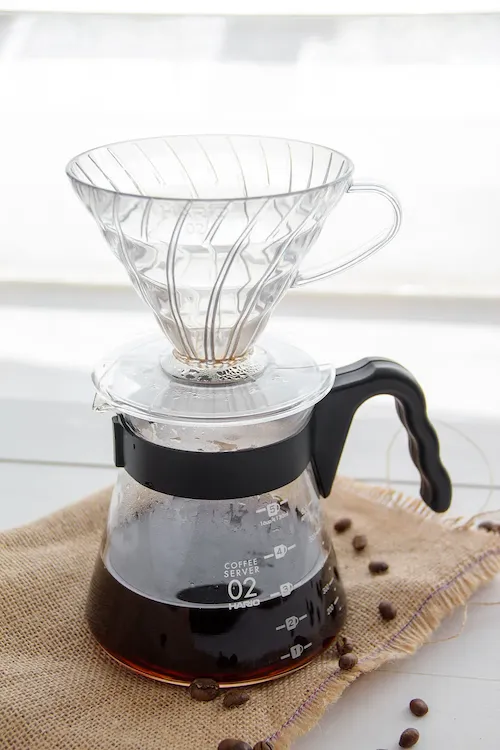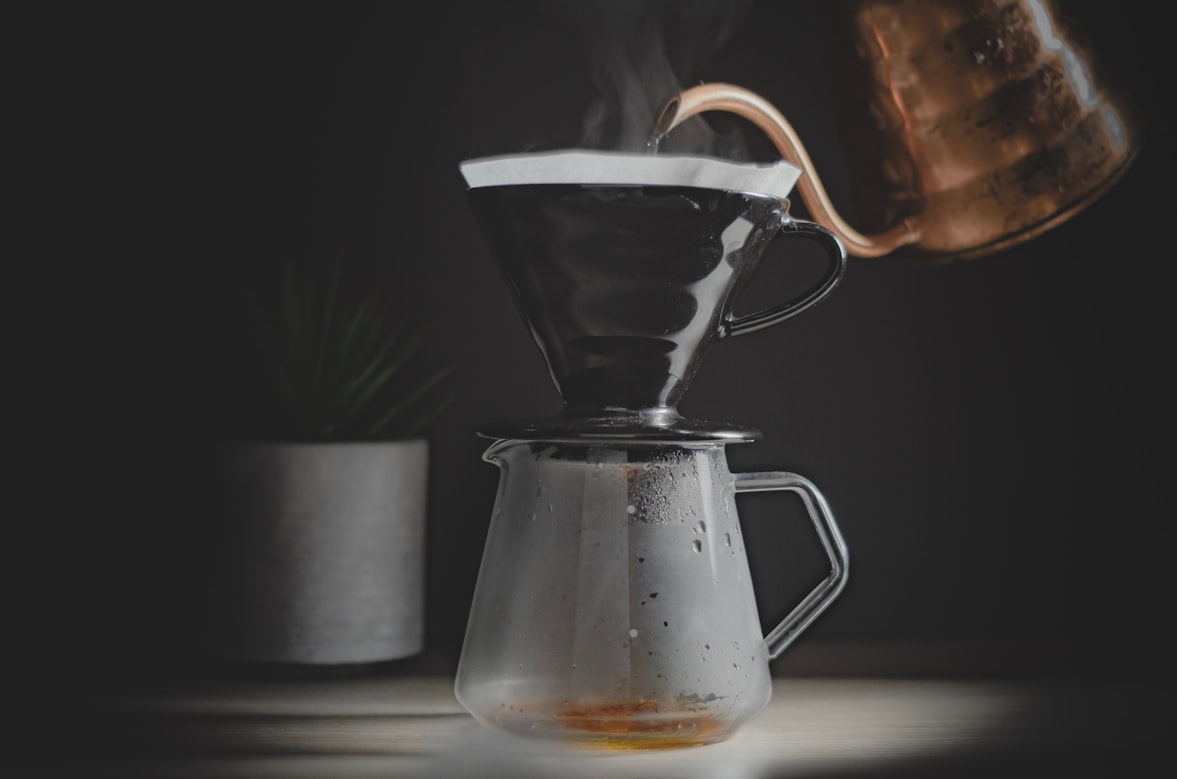If you’re familiar with me, you know that I’ve been delving into the fascinating world of specialty coffee for several years. Thanks to a friend who happens to be a skilled barista, I’ve had the opportunity to learn about various aspects of coffee, including the different stages of bean development, various preparation methods, and the art of tasting. While I don’t claim to be a professional, it has become one of my beloved hobbies.
Over time, I’ve explored and acquired different coffee preparation methods, and currently, I have five favorites at home: the French Press, the Italian Mocha, Chemex, Toddy, and the v60 method.
A coffee brewing method refers to the specific technique used to extract flavors from the coffee grounds. Factors such as the elevation at which the beans were grown, the humidity levels, processing techniques, storage duration, and even the water used can significantly impact the taste profile when employing different brewing methods.
Consequently, each method offers a unique experience, ranging from more acidic and fruity flavors to fuller-bodied textures. These methods can be classified into categories such as infusion extraction, percolation, vacuum filtering, and my personal favorite (for its simplicity and versatility) drip brewing.
Within the realm of drip brewing, we have notable contenders like Chemex, Kalita, and the v60 method, each with its distinctive characteristics and brewing style.
The V60 method
The V60 method, named after its distinctive conical shape with a 60-degree angle, was developed by Hario in 2004. This innovative design features curved grooves on the interior, facilitating the release of CO2 during the brewing process.

While crafting this blog post, I’m currently enjoying a coffee from Villa Rica, located in Pasco, Peru. This particular coffee undergoes the washed process, which I could delve into further in a separate post. It has been medium roasted to enhance its flavors and aromas.
When it comes to brewing, I follow a 1:15 coffee-to-water ratio. Typically, I use 20g of coffee, which corresponds to pouring 300ml of water (20 x 15). To ensure precision, I rely on a laboratory-grade scale I purchased from a specialty store.
For brewing, I prefer using filtered and ionized water. In my quest for optimal flavor, I have long abandoned boiled tap water to explore the nuances that different water sources can bring to the cup. The gooseneck kettle proves to be my trusted companion, allowing me to pour water with precision and control.
To prepare my coffee, I grind the 20g of coffee beans using the Timemore Chestnut C2 grinder, which consistently produces a medium grind with even particle distribution.
When it comes to filtration, I have the option to choose between a paper filter or a reusable cloth filter from Flowin Filters, a trusted brand recommended by fellow coffee enthusiasts. Whichever option I choose, I ensure it is placed inside the v60 brewer.
To begin the brewing process, I pour a small amount of water over 95 degrees Celsius, as indicated by the temperature gauge on my kettle. This initial pour serves to pre-wet the filter, preventing any residual flavors from influencing the taste of the brewed coffee.
Once the filter is pre-wetted, I discard the water from the Hario decanter, which serves as the vessel for serving the final brewed coffee. This step ensures a clean and fresh brewing environment for the optimal extraction of flavors.
After placing the 20g of ground coffee in the v60, I begin the pouring process with water that is ideally between 85 and 92 degrees Celsius.
To ensure even saturation of the coffee grounds, I occasionally use the handle of a spoon to create a small hole on top of the coffee bed. This allows me to pour water directly into that spot, ensuring that all the grounds are properly wetted.
The size of the grind can also impact the pouring technique. Finer grinds may require more careful pouring to ensure thorough extraction, while coarser grinds can result in a quicker and potentially watery extraction if not managed properly.
During the pouring process, I take my time and pour the water slowly, using circular motions in an anti-clockwise direction. I continue this process until I reach a total pour of twice the weight of the coffee (in this case, 40ml). This initial stage is referred to as the bloom, where the coffee bed swells and releases trapped gases, resulting in enhanced flavors and aromas.
After 30 to 45 seconds, the main brewing process begins. Here, I often try different pouring methods: sometimes I pour up to 200ml of water, wait for 30 seconds, and then pour an additional 100ml to reach a total of 300ml. Other times, I experiment with adding 60ml increments with 45-second intervals between each pour.
When I observe the coffee extracting in drops, I know it’s time to lift the v60 to prevent over-extraction and avoid a bitter taste.
In summary, my current coffee brewing setup as of June 2023 consists of the following:
- 20g of medium ground coffee
- 300ml of filtered water at an average temperature of 90 degrees Celsius
- Coffee-to-water ratio of 1:15
- 45 seconds of bloom or pre-infusion time
- Utilizing the v60 brewing method with Hario white filters
This setup allows me to achieve the desired flavors and characteristics in my brewed coffee.
There are many more details to explain, but I’ll keep it concise in this post. With a winter-but-summer-like in full swing here in Peru, a refreshing cold v60 is an excellent choice. Alternatively, I also enjoy preparing a homemade cold brew and combining it with orange juice for a delightful twist.
If you’re interested in learning how to prepare an orange-infused cold brew at home without the need for fancy equipment, leave a comment on this post.
The v60 brewing method is my personal favorite due to its versatility, allowing me to explore an array of flavors and coffee beans. The resulting body and acidity of the coffee are truly enjoyable to taste.
For those venturing into the world of specialty coffee, it’s worth noting that the true essence lies in savoring it without sugar. Coffee, being a fruit, can offer an impeccable and delightfully rich flavor through careful preparation, quality beans, and proper grinding. While the adjustment might feel sudden at first, your palate will adapt and appreciate the nuanced taste.
To truly indulge in the coffee experience, I highly recommend visiting a specialty coffee shop where every detail is meticulously attended to. Lima, along with various parts of Peru, has witnessed a remarkable growth in its coffee scene over the past years. Today, you can find exceptional coffee establishments like Kaldis, The Coffee Road, Origen, D’Wasi in Cusco, and many more.
I genuinely hope you feel inspired to explore different coffee brewing methods on your next visit to a specialty coffee shop. It’s an exciting opportunity to enhance your coffee journey and discover the full spectrum of flavors that await you. Embrace the experience with a curious and open mind. 😄
This post was originally written and published in December 2021 on my Medium profile. I have updated it as of June 2023
